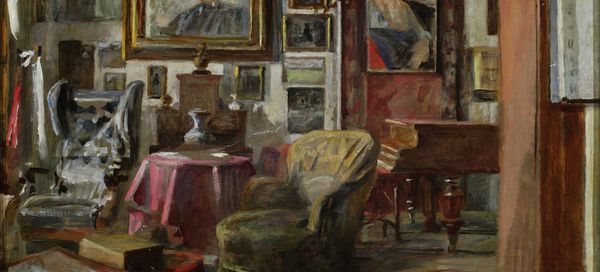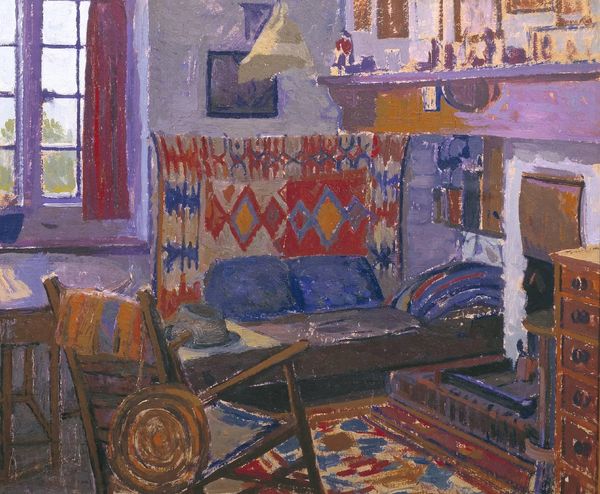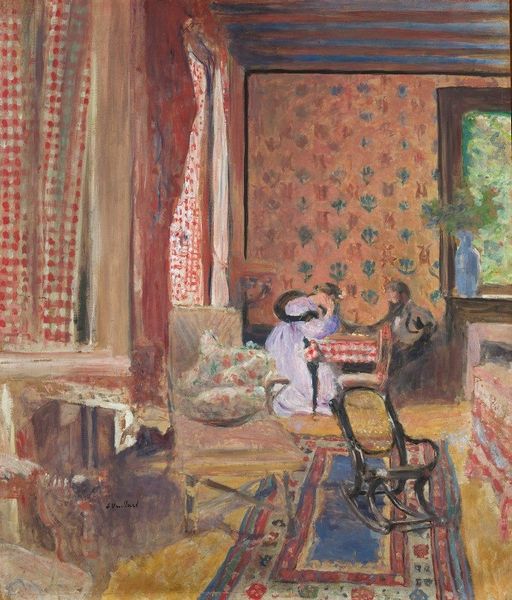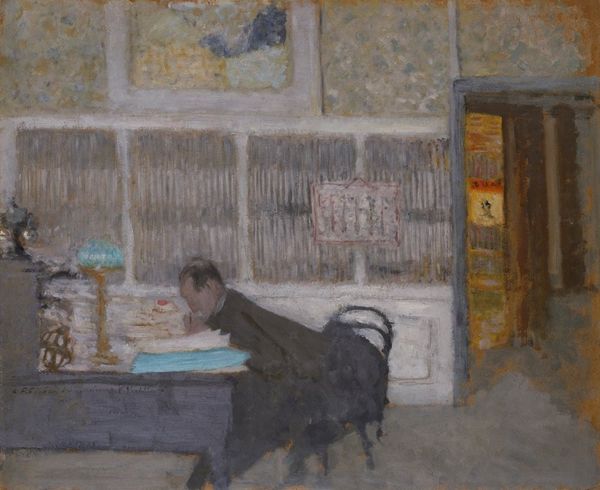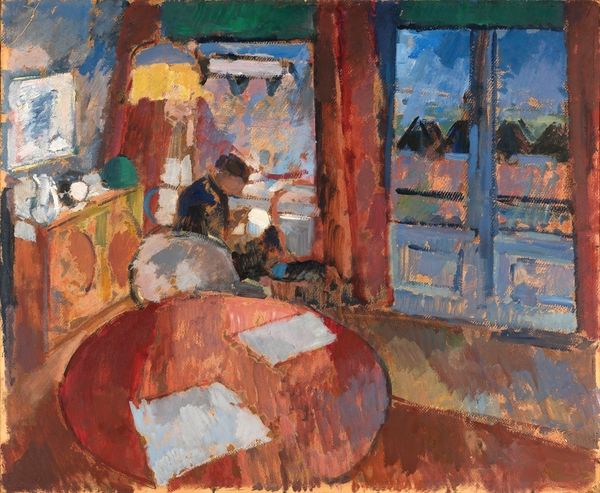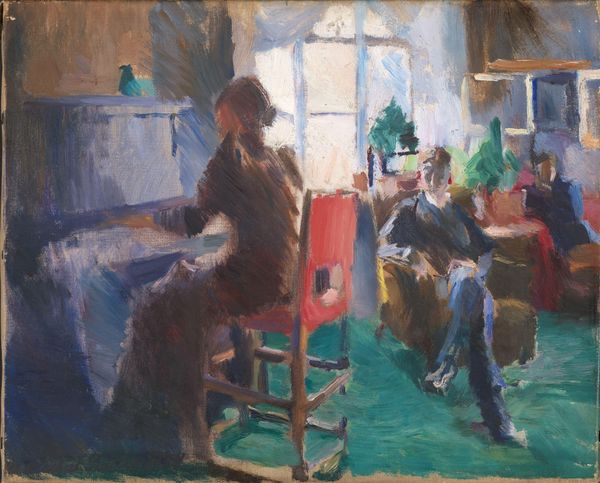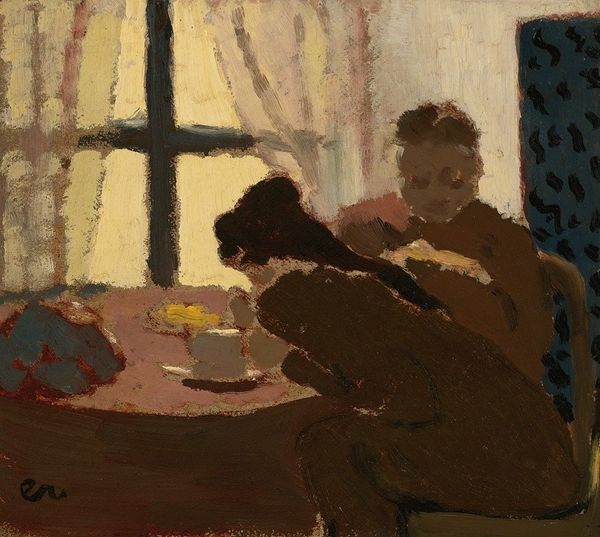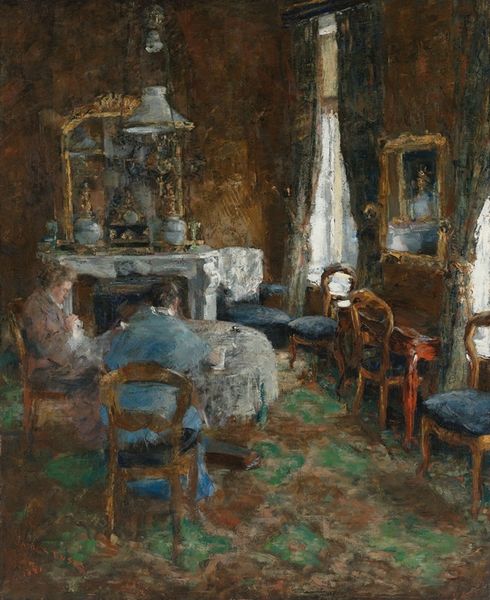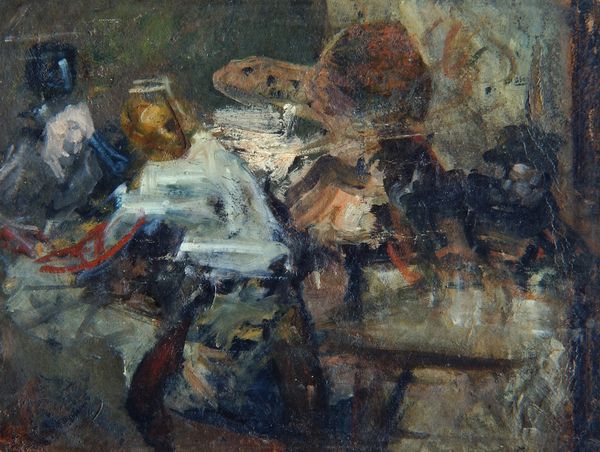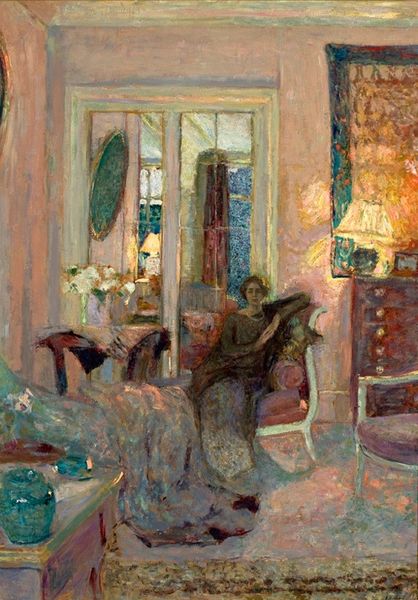
Copyright: Public domain
Curator: Frank W. Benson's "Sketch for a Mural," created around 1900 and now residing at the Smithsonian American Art Museum, offers an intriguing glimpse into a potential grand narrative. The mixed media work, a precursor to something much larger perhaps, uses color and composition to quietly beguile us. Editor: My first impression is of a domestic interior cloaked in a subdued, almost somber mood. The color palette is muted, with an emphasis on earth tones that are giving me the sensation of viewing this through a dark filter of personal, emotional context. The scale, even for a sketch, seems intimate, drawing you into this space of potential stories untold. Curator: Absolutely, the subdued palette speaks volumes, perhaps about the role of women, both in the domestic space, and how women as domestic subjects were viewed in painting. Note how both figures within are seemingly engulfed in shadow or sit within shadow and/or adjacent to what appear to be domestic implements, one standing the other seated. Editor: Visually, I am immediately drawn to the figure at the window; this almost stoic pillar of black that acts to anchor that zone in which light spills and floods out and down and across. And consider the composition with the seated figure: her very lines appear to melt back into that space while it simultaneously suggests movement outwards, as in an undoing or disintegration; her dress mirrors the shape and direction of the shadows! Is there perhaps a play of presence and absence embedded within Benson’s handling of light and shadow? Curator: I think that reading into the symbolism of light and dark in relation to societal expectations and restrictions, particularly for women, makes a lot of sense. The figure in shadow, versus that flood of light… Is this symbolic or representative of hope and opportunities versus a dark or unknowable future, where they have perhaps little say? Perhaps Benson, through the setting of the painting, offers that tension. Editor: On second view, the painting now feels heavy. This feeling, brought on by a close examination of formal design is interesting. It moves beyond mere representation and gives this artwork real character. The texture also stands out, created using impressionistic strokes that evoke movement and depth, despite the somewhat oppressive color story, or because of it! Curator: Indeed. Exploring such interior lives from a historically-engaged standpoint reveals complexities regarding gender, identity, and social expectation that continue to resonate today. Editor: Analyzing the structure reveals an almost narrative complexity hidden within this otherwise quiet scene—light, color, form, composition all coming together.
Comments
No comments
Be the first to comment and join the conversation on the ultimate creative platform.
